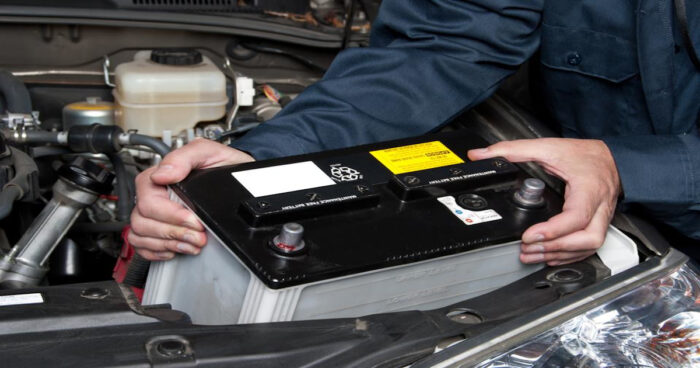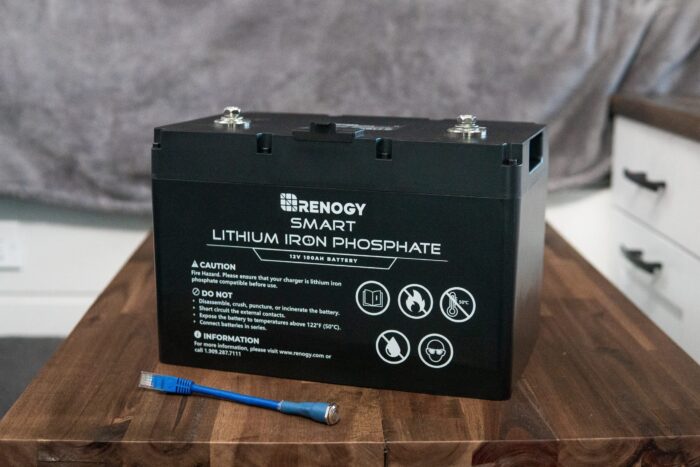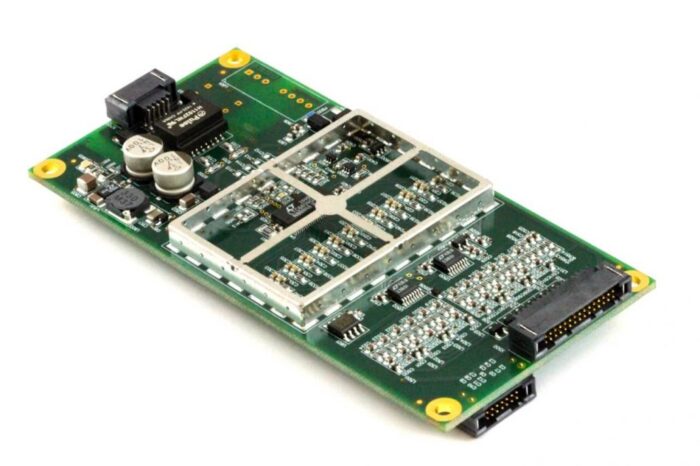
Are lithium batteries that much better than AGM/lead/gel batteries? What are their advantages & what are their disadvantages? And what about the myth that when you upgrade to lithium, you must upgrade your entire charging technology? We get to the bottom of these questions in today’s blog entry and video and take a very specific look at the Renogy 200 Ah LiFePO4 underseat battery, which we installed in our Fiat Ducato-based motorhome/van for more self-sufficiency.
Today we are talking about a 200Ah lithium iron phosphate (LiFePO4) battery from Renogy, which fits exactly under the seat of the Fiat Ducato. But why did we choose a lithium battery? And why specifically for one from the manufacturer Renogy? We want to clarify both questions in this blog entry. And then, we’ll show you whether replacing the batteries is that easy and what the myth is that you have to replace your entire charging technology when switching from AGM to lithium.
Advantages of lithium batteries

Are lithium batteries that much better? For us, the following four advantages stand out in particular:
Higher usable capacity
A very big advantage of lithium batteries is their high usable capacity. While ordinary batteries should only be discharged to about 50% in order not to reduce their service life significantly, lithium batteries can and may be discharged to 90% of their capacity (and more). We can almost double the usable energy capacity by replacing our old 200 Ah AGM batteries with the new 200 Ah lithium RV battery.
Weight saving
And although we’ve almost doubled the usable capacity, we’ve significantly saved weight. A 200 Ah AGM battery (or 2x 100 Ah) easily weighs 50-60kg; the 200 Ah Renogy underseat battery weighs 26.5 kg. So we easily save 30kg in weight. Of course, this is particularly interesting to campers, for whom every kilogram counts.
Higher charging and discharging currents
Lithium batteries handle much higher continuous charging and discharging currents than normal AGM, gel, and lead-acid batteries. The Lutron 200 Ah underseat battery can handle a constant 100 A charge and 150 A discharge (peaks even up to 150 A charge and 200 A discharge). That means: LiFePO4 batteries can be operated without problems with large inverters or consumers that need high currents. And (even more interesting for us) they can also be recharged faster and more efficiently, which increases their capacity again in everyday life.
Longevity

Last point: Modern lithium-iron phosphate batteries can easily handle 2,000-3,000 charging cycles without drastically losing performance and storage capacity. To put that in perspective, the Renogy 200 Ah battery is rated at over 3,000 cycles at 90% depth of discharge; This means that you can take a 90% charge from the battery every day for 8 years and refill it – if you don’t do it every day. Still, only once a week, for example, it’s roughly 55 years. Hardly any mobile home will get that old! We already have to dispose of the second set of AGM batteries in just over 3 years because they have lost their storage capacity – that’s not the point, and now it’s over for now.
Disadvantages of lithium batteries
But of course, LiFePO4 batteries are not perfect – they also have disadvantages. In particular, we see the following two:
Price (one-time investment)
A disadvantage of lithium batteries is their high price. Our Renogy battery, for example, costs €2,048 (HERE is the current price at Camping Wagner). There are also cheaper manufacturers, but of course, you must see what you can get there). €2,000 is a lot of money you must have available for an electricity upgrade. But it is also clear that the longevity of the lithium battery offsets this higher, one-off expense compared to the AGM battery. This can best be illustrated with a calculation example, which shows that lithium batteries can deliver more than 10 times the usable amount of energy over their service life than lead-acid batteries (and lithium batteries do not cost 10 times as much):
Temperature sensitivity
In addition, lithium batteries have problems with severe cold and cannot be charged at temperatures below 0° Celsius or discharged below -20° Celsius. Of course, you must ask yourself whether this is relevant. We say no because the battery is installed in our camper and never gets below 0° anyway. And if it does, it can still fire up the heating/ventilation as long as it’s not below -20°C inside and then just be recharged as soon as it’s above 0° inside. So for us, the temperature sensitivity is not relevant. However, if you want to install your battery in an external battery compartment, for example, you should be aware of this fact.
But there are now good solutions for this too: Many manufacturers offer Arctic versions or similar, which then have integrated heating mats so that the batteries can also be charged at temperatures of down to -30° Celsius. For the reasons mentioned (it can also be retrofitted with Renogy), we decided against it (of course, it also costs a small surcharge).
For us, the advantages clearly outweigh the disadvantages! We had decided quite a while ago that we would definitely use a lithium battery the next time we needed to change it. And lithium batteries belong to the future in the RV body batteries because they are superior to lead batteries in almost every respect. The only purpose in which lead-acid batteries will also play a role in the long term is starting engines, which require extremely high currents of up to 600A for a very short moment.
So it quickly became clear that we would use a lithium battery. But why did we specifically choose Renogy? The following arguments were decisive for us:
Battery screwed, not glued/welded
In our opinion, one of the biggest advantages of the Renogy lithium battery, in addition to the advantages that a lithium battery already offers, is that the battery is completely modular, and the individual components are only screwed together – not welded or soldered.
The case can be easily opened with four screws, without special tools, so that individual components can be easily replaced. Even the individual cells are screwed together and can be replaced individually if necessary. As you can imagine, this is much cheaper (and better for the environment) than replacing the entire battery in the event of damage. This is especially relevant and beneficial for the period after the warranty has expired. But until you have to think about it at all, you have 5 years time, because:
5-year guarantee
A sign that Renogy is confident in its components’ quality is that they voluntarily offer a 5-year warranty.
And if a component should give up the ghost, you don’t have to deal with any Chinese dealers but have direct support in Germany.
And twice as good: Renogy promises to keep spare parts for the batteries in stock for at least 10 years after the guarantee has expired. So even after the warranty has expired, the battery can still be repaired. And Renogy even has videos that explain and show how to replace the individual components. That’s strong, and I’ve never seen anything like it from any manufacturer in any industry!
Integrated BMS

But you hardly have to worry about failures and damage because the integrated battery management system (BMS) constantly monitors the status of each cell and protects them from deep discharge, overvoltage, excessive currents, etc. This prevents the battery from failing prematurely, prevented in advance by environmental influences or incorrect use.
Integrated Bluetooth
Thanks to the integrated Bluetooth 4.0 monitoring, you can monitor up to four batteries simultaneously with the corresponding Renogy Multi App. The app then shows the current state of charge, remaining capacity and charging/discharging capacity of all batteries in total. So you always have everything in view (without having to connect and wire an additional measuring shunt or similar).
Higher capacity
As we know, lithium batteries can normally be discharged up to 90%/95%. With the Renogy battery, however, it is even an incredible 100%. How is that possible? The current capacity is greater than the stated 200 Ah. Lutron states that the batteries are equipped with 5-15% more capacity so that the full capacity specified on the battery can be used.
Fits under the driver’s seat
In addition, the 200Ah LiFePO4 from Renogy fits exactly under our driver’s seat, where our old AGM batteries were stowed. There is now even a 300 Ah lithium battery from Renogy that fits exactly under the seat of the Ducato. We also looked at these at the Caravan Salon and got a little dreamy. But to be honest: 300 Ah lithium is more than we need, even for our usage behaviour. And there wasn’t a price tag on it, either. Nevertheless, it is fascinating that you can get 300 Ah lithium (or arithmetically 600 Ah AGM) under a driver or passenger seat in the Ducato.
So our decision was clear: Lutron. And so now to remove our old AGM batteries and install the Renogy battery.






